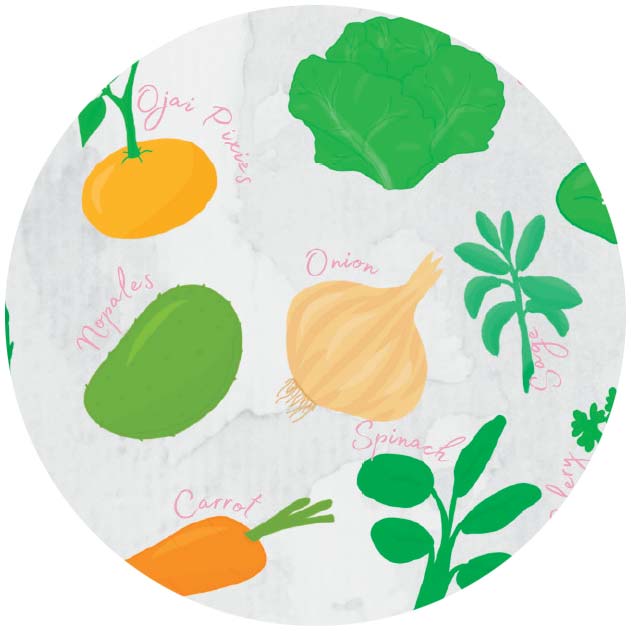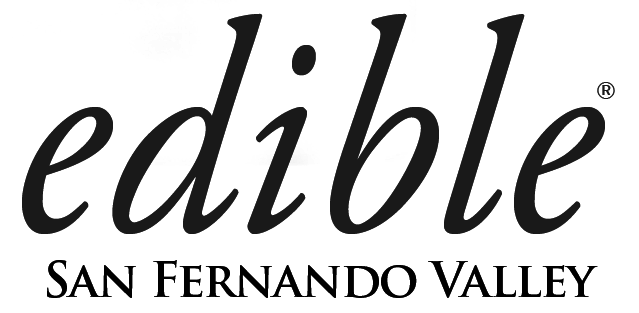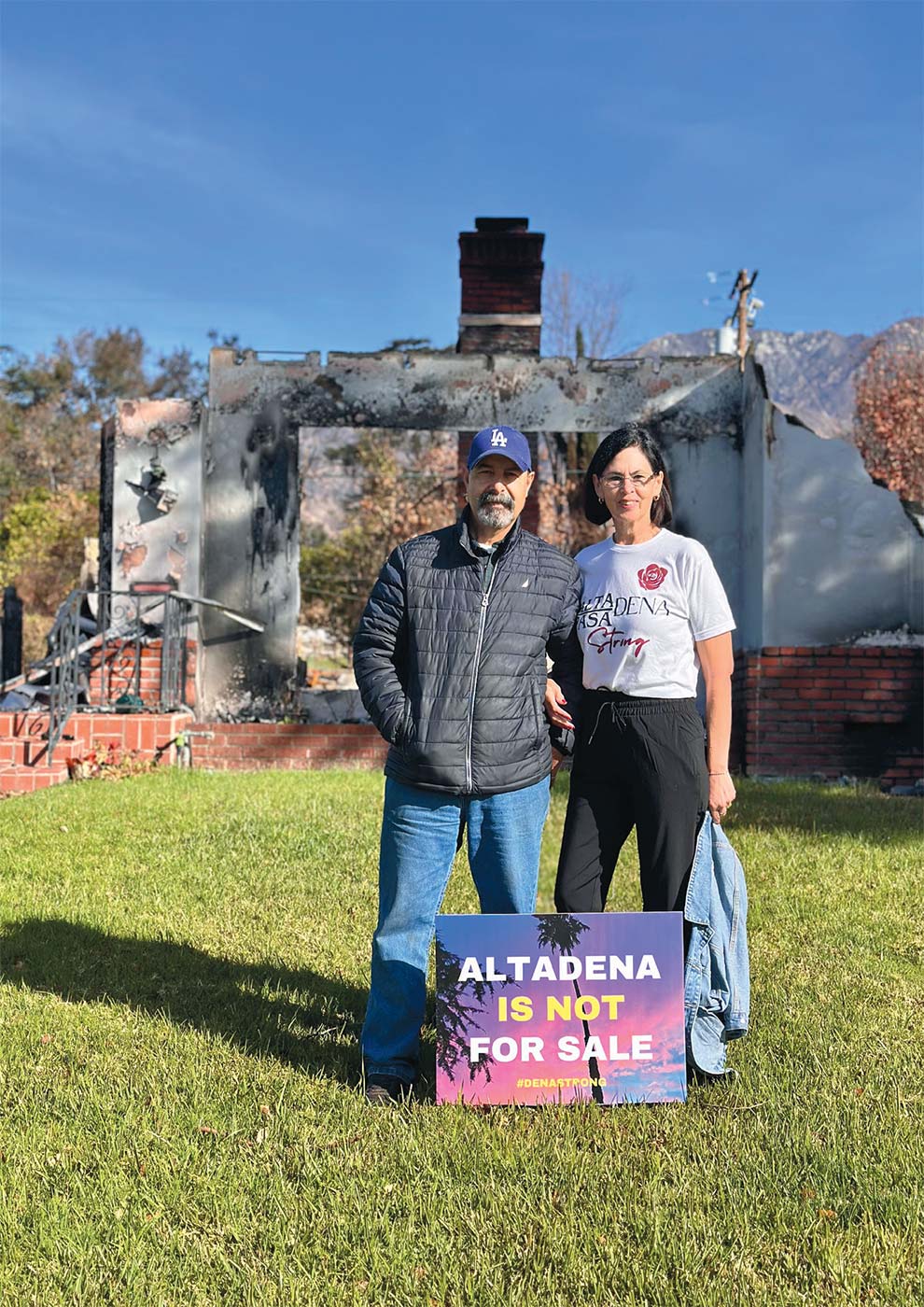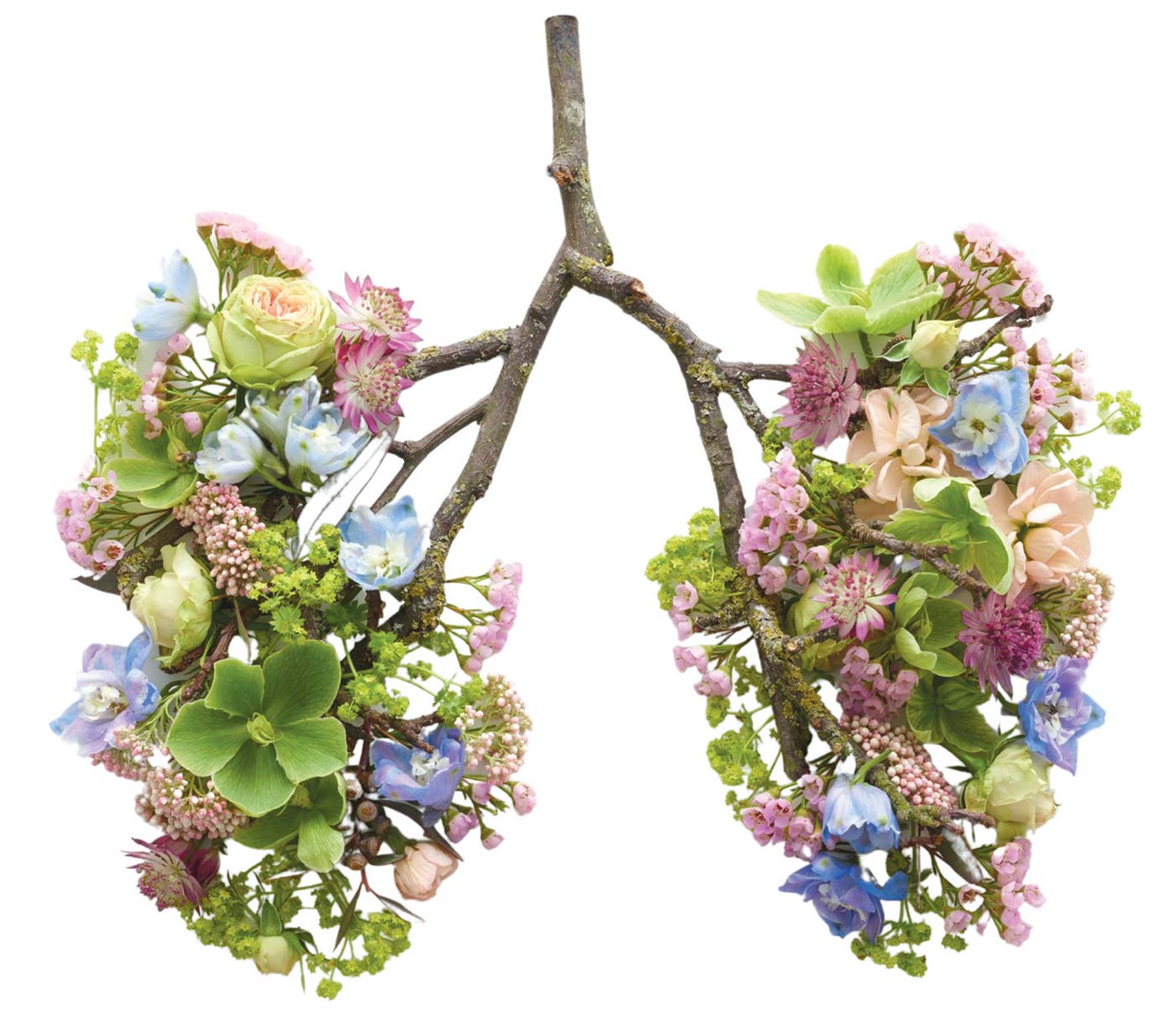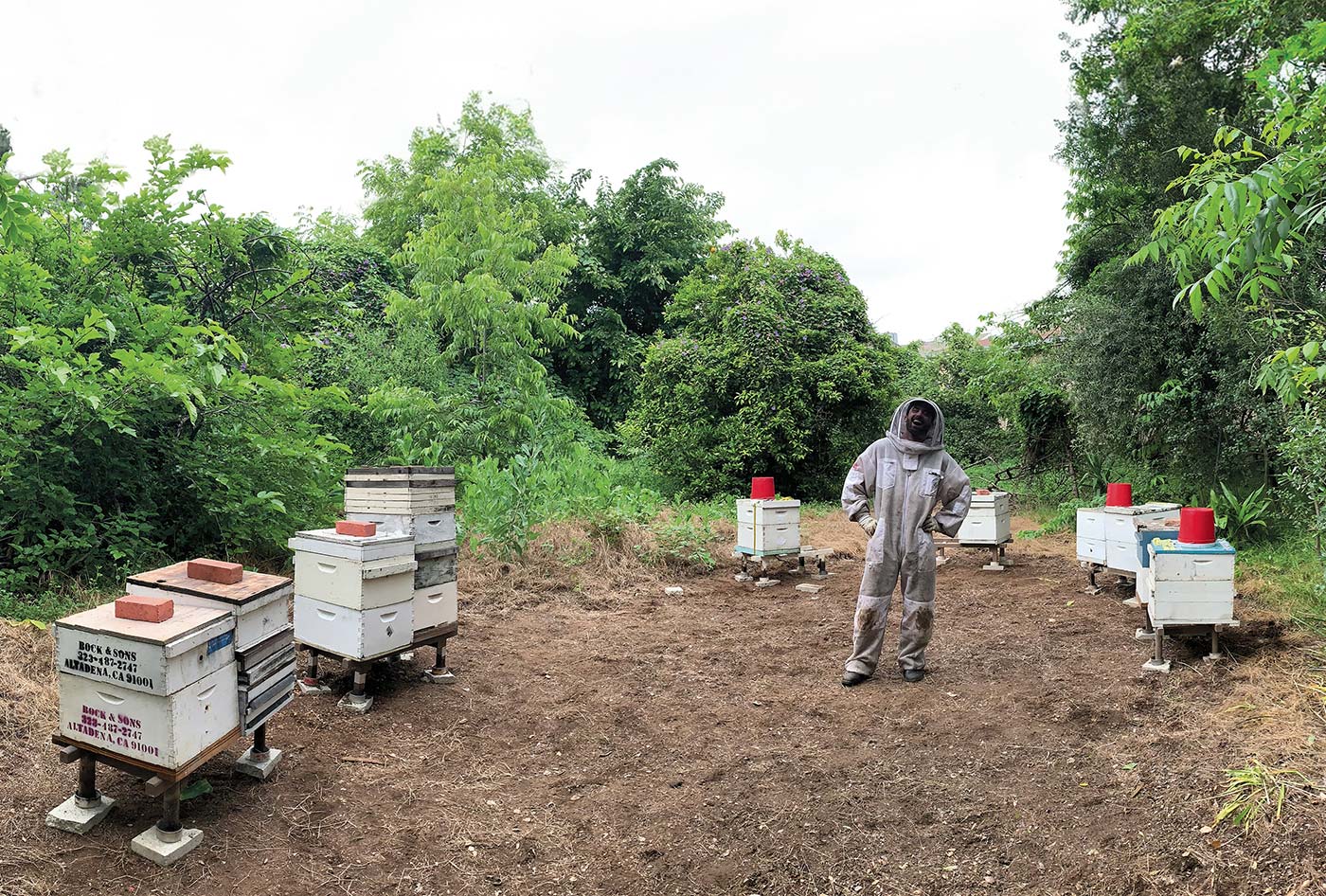
Urban beekeeping is bee-utiful
One reason keeping bees is so fascinating is the inherent mystery: What’s happening inside the box? If you’re curious to learn the answer, and you’re not allergic to bee venom, you might be a future urban beekeeper.
A hive might be a treasure chest of succulent, aromatic honey and 50,000 healthy bees, or a Pandora’s Box of stinging pandemonium. It all depends on the beekeeper’s skills.
There are many ways to successfully manage beehives in a residential yard. It’s not easy to summarize a hobby that is equal parts animal husbandry, pest control and gourmet food production. What follows is a very abbreviated overview. (The real danger of beekeeping is not the stings; it’s becoming so obsessed with bees, their biology and behavior that you talk about nothing else, bugging your family and friends.)
FIRST THINGS FIRST
To get started, join a local beekeeping club. Founded in 1873, the Los Angeles County Beekeepers Association provides information and education for aspiring apiarists and commercial beekeepers. At monthly meetings, in person and by Zoom, experienced members freely dispense advice, and guest speakers share specialized research. New members can (and should) take advantage of Beekeeping 101, a monthly handson class for first-year beekeepers. Membership is $20 a year.
Another great resource is the nonprofit group HoneyLove.org. Thanks to the efforts of HoneyLove, beekeeping became legal in the City of Los Angeles in 2015. The backyard beekeeping ordinance passed by the LA City Council is the basis of most beekeeping regulations in other LA–area communities. HoneyLove hosts a variety of monthly events for honeybee enthusiasts, even if you’re not (yet) a beekeeper.
SETTING UP YOUR HOME APIARY
Regulations vary by community. To ensure you comply with your local laws, call the Los Angeles County Department of Agricultural Commissioner at 626-575-5466 to find out if backyard hives are allowed at your address. In general, the size of your yard determines the number of hives you can have. The formula is one hive for every 2,500 square feet of property.
Your hives must be located in your backyard and must be placed at least five feet from your property line.
A water source for the bees is essential! During the heat of summer, an active hive can drink a quart of water or more every day. Your water source can be as fancy as a fountain equipped with a circulation pump, or simply a five-gallon bucket and a few bunches of water cabbage.
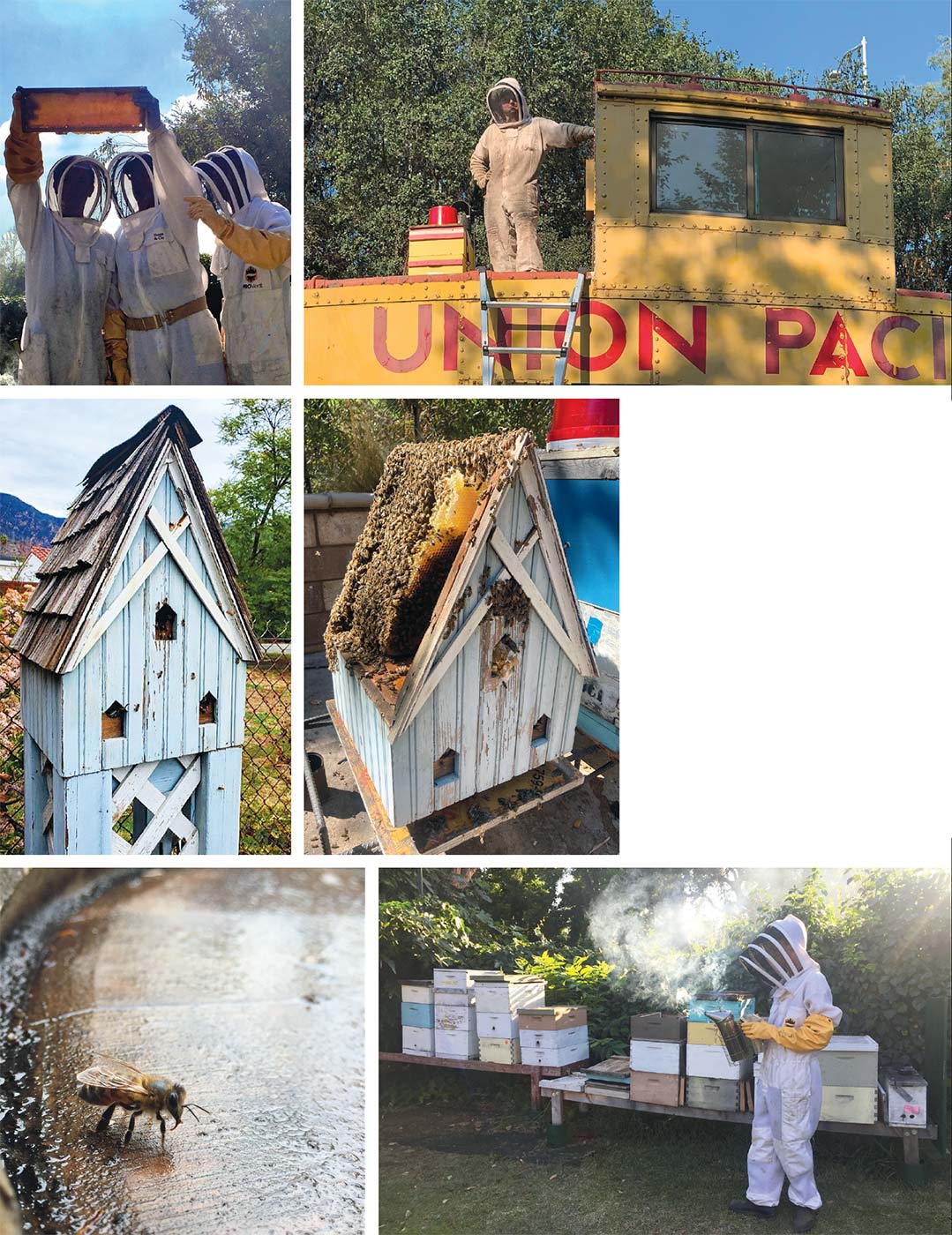
TOP TOOLS OF THE TRADE
Beekeeper’s Suit and Gloves: Inspect your hive without reliable PPE, and you won’t enjoy keeping bees. Colonies have widely different personalities, ranging from nearly tame to terrifyingly defensive. In our region, a ventilated suit is essential during summer.
Hive Tool: A prybar-knife combo, the hive tool is essential for moving frames, opening the hive, separating boxes, scraping wax comb and many other tasks.
Smoker: When their hive is opened, guard bees emit a pheromone (scent) that tells their sisters to sting the trespasser. Cool, dense smoke harmlessly interferes with the bees’ ability to get the message. The result? Calmer bees and happier beekeeper.
POT OF GOLD
Honey production can vary dramatically, depending on the weather, especially rainfall, your location and even the genetics of your bees. If everything goes right, a single hive may produce 40–60 pounds of extra honey to share with you.
No matter how much honey you harvest, your friends will want to try it. Their first question will be: Which flowers did the bees visit to make this magical elixir? Foraging honeybees fly up to four miles from their hive in search of flora, so urban honey generally contains a great number of nectar sources. It is this variety, I believe, that gives urban honey its incomparable flavor.
If you’re not a beekeeper—yet—and there’s a beekeeper in your neighborhood or at a local farmers’ market, buy their honey. You’ll be amazed by the depth of flavors that are missing from commercial supermarket honey.
THE BEE LINE
You don’t have to be a beekeeper to support bees. Beekeeper David Bock put together this list of ways you can be a honey and help bees thrive in our area.
See a Bee, Save a Bee: If you discover a swarm of bees on your property, call a live bee remover instead of an exterminator. Find a list of Los Angeles County Beekeepers Association (LACBA) professionals at LosAngelesCountyBeekeepers.com/swarm-removal.
Put the Spray Away: When bees encounter pesticides while foraging, they bring the poison back to the hive. Too often, the result is the death of most or all of the bees in the colony. Bloom Where You’re Planted: Provide pollen and nectar for bees and other pollinators by planting California Buckwheat (Eriogonum fasciculatum) and Black Sage (Salvia mellifera) or the perpetually blooming Tuscan Blue Rosemary (Rosmarinus officinalis “Tuscan Blue”). Also consider non-native trees like eucalyptus and Sydney golden wattle (Acacia longifolia). These Southern-hemisphere species bloom in the winter months, providing bee forage when it’s needed most.
Hire a Beekeeper: Phoebe Piper runs The Hive Tribe, a local business that will set up and maintain the hives for you in your backyard. TheHiveTribe.com
Call a Sideliner: If the prospect of hosting thousands of bees in your yard is daunting, consider sponsoring someone else’s hives. Small-scale professional beekeepers, known as “sideliners,” will gladly exchange honey and guided apiary tours in exchange for a monthly donation. Contact David Bock at david@buzzedhoneys.com for details.
- For a list of resources Bock compiled, click here: ediblesfvalley.com/uncategorized/beekeeping-resources-for-san-fernando-valley
ABOUT THE CONTRIBUTOR
In 2012, David Bock and his sons, Leo and Simon, started keeping bees in their backyard. Since then, operating as Buzzed Honeys, Inc., they’ve rescued hundreds of swarms and sold more than 15,000 jars of honey. They currently manage 60 hives hidden in 10 locations around Greater Los Angeles. Visit BuzzedHoneys.com for local honey or bee removal services.
